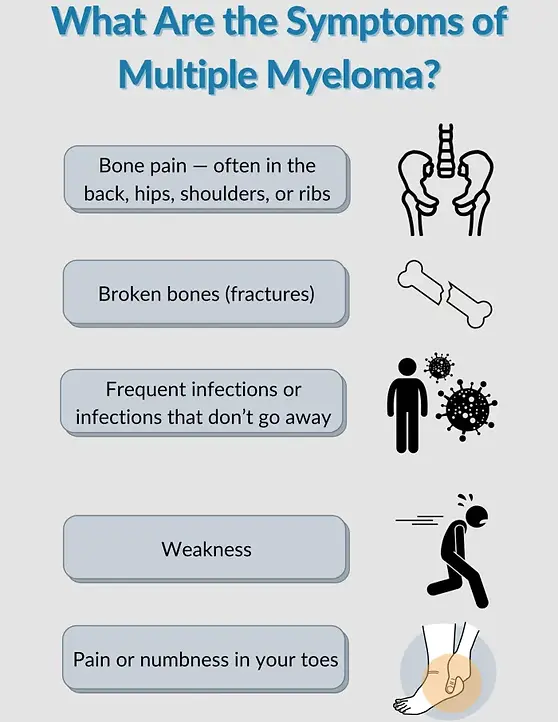

Multiple Myeloma
The symptoms of multiple myeloma can vary from person to person. Some people with multiple myeloma have no symptoms at all. The incidence of myeloma is more than 2 times higher in Black people compared to White people, and median age at diagnosis is younger (66 versus 70 years of age)

Knowledge is Power
The incidence of multiple myeloma in African Americans is two to three times higher than in other ethnicities and is the leading hematologic cancer in African Americans. African Americans are not only at twice the risk of developing multiple myeloma when compared to white Americans, they are also more likely to be diagnosed at a younger age. Mortality is also higher in African Americans compared with White patients.
It’s difficult to diagnose multiple myeloma early. Often, multiple myeloma causes no symptoms until it reaches an advanced stage. Sometimes, multiple myeloma is found early when a routine blood test shows an abnormally high amount of protein in the blood.
Although patient outcomes in multiple myeloma have improved in the early 21st century, disparities exist among different racial and ethnic groups, both in the United States and worldwide.
Despite the high incidence of multiple myeloma in African American individuals, a vast majority experience delays in diagnosis and reduced usage of effective therapies, including stem cell transplantation, as well as low participation in clinical trials. Racial disparities, social and financial health disparities, and barriers to earlier access to care can lead to poorer patient outcomes.
What is Multiple Myeloma?
So, what is multiple myeloma? Multiple myeloma is a cancer of the plasma cells. These white blood cells are found in the bone marrow and produce antibodies to help your immune system fight infections. Cancerous plasma cells produce abnormal proteins called M proteins. A high level of M proteins can damage your kidneys and weaken your immune system. These cancerous cells also replace normal cells with tumors, usually in the bone marrow. This can cause bone damage and lead to bone pain or fractures.
Risk Factors
-
Increasing age.
-
Your risk of multiple myeloma increases as you age, with most people diagnosed in their mid-60s.
-
-
Male sex.
-
Men are more likely to develop the disease than are women.
-
-
Black race.
-
Black people are more likely to develop multiple myeloma than are people of other races.
-
-
Family history of multiple myeloma.
-
If a brother, sister or parent has multiple myeloma, you have an increased risk of the disease.
-
-
Personal history of a monoclonal gammopathy of undetermined significance (MGUS).
-
Multiple myeloma almost always starts out as MGUS, so having this condition increases your risk.
-
Signs and Symptoms
-
Frequent infections.
-
Myeloma cells inhibit your body's ability to fight infections.
-
-
Bone problems.
-
Multiple myeloma can also affect your bones, leading to bone pain, thinning bones and broken bones.
-
-
Reduced kidney function.
-
Multiple myeloma may cause problems with kidney function, including kidney failure.
-
-
Low red blood cell count (anemia).
-
As myeloma cells crowd out normal blood cells, multiple myeloma can also cause anemia and other blood problems.
-
-
Increased blood calcium levels
-
Nervous system symptoms





